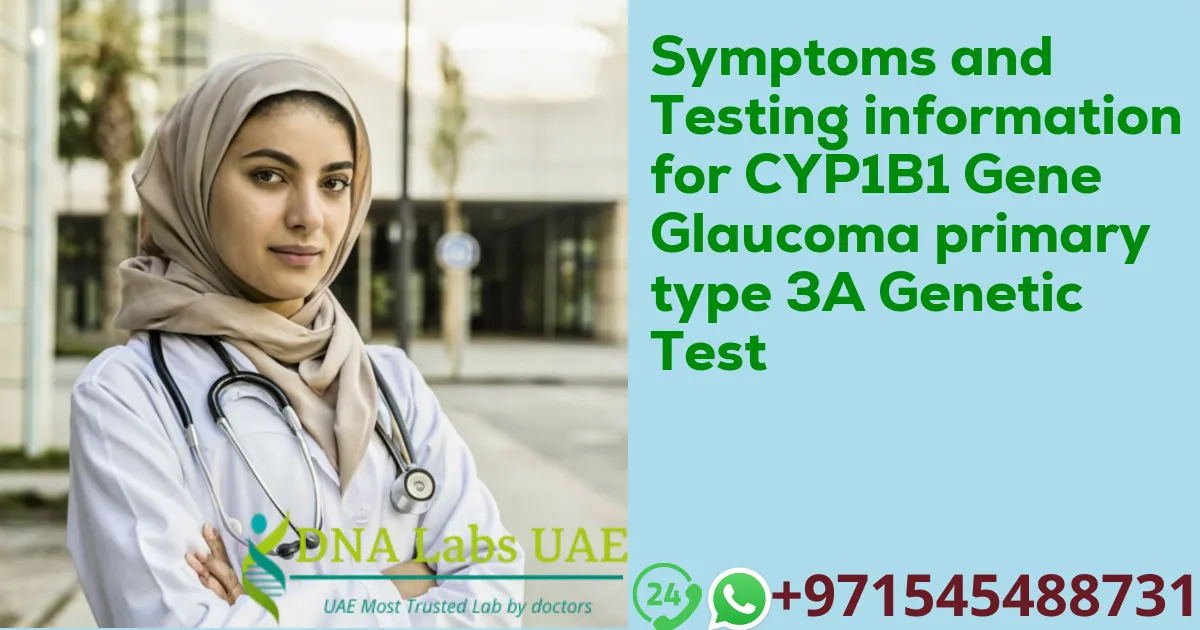Glaucoma is a group of eye conditions that can lead to vision loss by damaging the optic nerve, often associated with increased pressure in the eye. Primary Congenital Glaucoma (PCG) is a severe form of glaucoma that appears early in life, ranging from birth to the first few years. Among the genetic variations contributing to this condition, mutations in the CYP1B1 gene are significant. Recognizing the symptoms early on and understanding the role of genetic testing can be crucial in managing and potentially mitigating the progression of this disease.
Symptoms of CYP1B1 Gene Glaucoma Primary Type 3A
Primary Congenital Glaucoma due to mutations in the CYP1B1 gene, also known as Glaucoma Primary Type 3A, manifests with several identifiable symptoms. Parents and caregivers should be vigilant for signs such as excessive tearing, photophobia (sensitivity to light), and corneal haziness. These symptoms result from the increased intraocular pressure that characterizes this condition, leading to the distinctive triad of symptoms known as the “Buphthalmos triad”: enlargement of the eyeball, corneal edema, and Haab’s striae (tears in the Descemet membrane of the cornea).
Moreover, children may exhibit signs of irritability, poor vision, or seem to have difficulty focusing on objects. The enlargement of the eyeball can be particularly noticeable, giving the eyes a characteristic large appearance. This symptom, while visually apparent, also signifies the progressive nature of the condition, underscoring the urgency for diagnosis and intervention.
Understanding CYP1B1 Gene Glaucoma Primary Type 3A Genetic Test
The genetic test for CYP1B1 Gene Glaucoma Primary Type 3A is a pivotal step in diagnosing and managing this condition. By identifying mutations in the CYP1B1 gene, healthcare providers can confirm the diagnosis of PCG, enabling them to tailor treatment strategies effectively. This test is particularly crucial for families with a history of glaucoma, offering the potential for early intervention.
Conducting the test involves collecting a DNA sample, typically through a blood draw or a cheek swab. The sample is then analyzed in a laboratory to detect the presence of mutations in the CYP1B1 gene. A positive result indicates a mutation in the gene, confirming the diagnosis and allowing for a more informed approach to treatment and management.
Cost of the CYP1B1 Gene Glaucoma Primary Type 3A Genetic Test
The cost of the genetic test for CYP1B1 Gene Glaucoma Primary Type 3A at DNA Labs UAE is 4400 AED. While the price may seem significant, the value of early diagnosis and the potential for tailored treatment plans can be invaluable for affected families. It is also advisable to consult with healthcare providers and insurance companies regarding coverage options and potential financial assistance programs.
Conclusion
Early detection and intervention are key in managing Primary Congenital Glaucoma, particularly for those with a genetic predisposition due to mutations in the CYP1B1 gene. Recognizing the symptoms early on and opting for a genetic test can significantly impact the quality of life and vision preservation for affected individuals. DNA Labs UAE offers a comprehensive genetic test for CYP1B1 Gene Glaucoma Primary Type 3A, providing families with crucial information for managing this challenging condition. For more information and to schedule a test, visit DNA Labs UAE.



